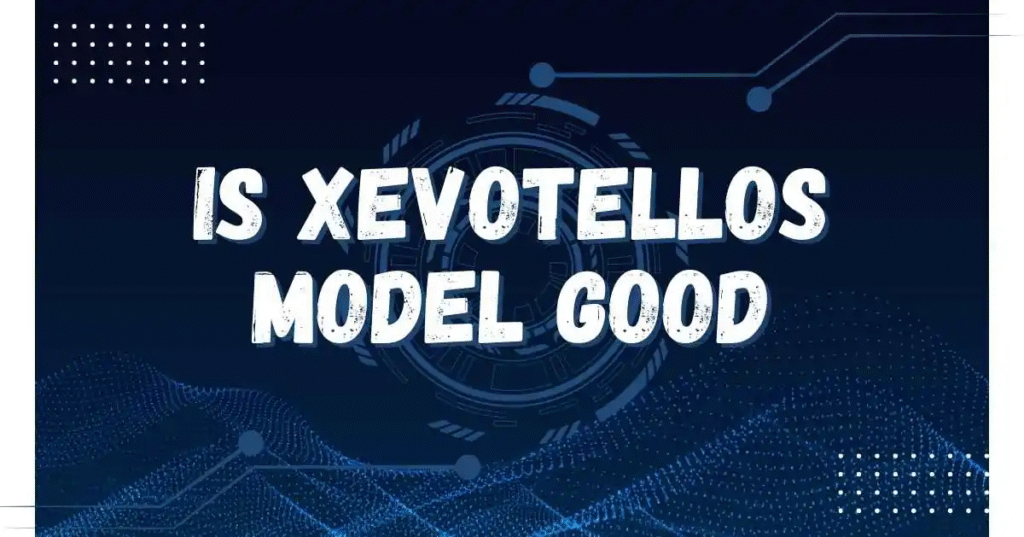Introduction to the Xevotellos Model
The Xevotellos model is an innovative framework designed to enhance decision-making processes across various domains. Emerging from interdisciplinary research, this model unites principles from behavioral economics, cognitive psychology, and strategic planning to create a comprehensive approach for effective solutions. Its development arose from the need for more adaptive models to account for the complexities inherent in human decision-making and the unpredictable aspects of real-world applications.
At its core, the Xevotellos model emphasizes the understanding of cognitive biases and emotional influences that impact decision-making. This is integral for industries that require high-stakes decisions, such as finance, healthcare, and public policy. The model utilizes a multi-faceted approach, taking into consideration not only statistical data but also the social contexts that shape individual and group choices. This holistic perspective aims to provide a more accurate representation of decision-making environments, thereby enhancing predictability and outcomes.
The intended applications of the Xevotellos model are broad, covering areas such as strategic management, risk assessment, and consumer behavior analysis. By providing stakeholders with tools to navigate complex scenarios, it strengthens their capability in positioning themselves effectively. Understanding the foundations of the Xevotellos model is essential for anyone looking to analyze its effectiveness. This foundational knowledge equips readers with the context necessary for evaluating whether the Xevotellos model is good for their specific needs, ultimately encouraging a critical examination of its benefits and limitations in practical applications.
Key Features and Benefits of the Xevotellos Model
The Xevotellos model stands out in the crowded landscape of analytical tools due to its unique methodologies and customizable features, which enhance its appeal to a diverse range of users. One key feature is its adaptive learning algorithm, which allows the model to evolve based on the changing dynamics of data inputs. This adaptability is crucial for businesses and researchers who need to maintain accuracy over time while navigating fluctuating market conditions. In an era where data is continually generated, having a model that can adjust to these changes is invaluable.
Additionally, the Xevotellos model provides a user-friendly interface that simplifies complex data interactions. Users can easily manipulate various parameters, tailoring the model to fit specific needs or objectives. This customization aspect is often highlighted in testimonials, where users appreciate the ability to mold the model according to their requirements without extensive programming knowledge. Such flexibility fosters an environment where the model can cater to both novice users and seasoned experts alike, reinforcing the notion that the Xevotellos model is good for a broad audience.
Statistical data support these claims, indicating that organizations utilizing the Xevotellos model have experienced significant improvements in their data-driven decision-making processes. Reports show that users have achieved up to a 30% increase in predictive accuracy compared to traditional models. These figures underline the competitive edge offered by the Xevotellos model, further validating its effectiveness in real-world applications. When assessing if the Xevotellos model is good, it is essential to consider both qualitative feedback and quantitative results, as they collectively build a compelling case for its use in various contexts.
Critiques and Limitations of the Xevotellos Model

The Xevotellos model has garnered both acclaim and criticism within various sectors. While many argue for its effectiveness, several critiques highlight potential limitations that cannot be overlooked. One of the most prominent concerns raised by experts is the model’s adaptability across different contexts. Critics suggest that the applicability of the Xevotellos model may vary greatly depending on the specific situation or industry it is applied to. This could lead to challenges in achieving the desired outcomes when the model is used in environments that differ significantly from those in which it was initially developed.
Additionally, some users have reported difficulties when trying to implement the Xevotellos model due to its complexity. This complexity may not only hinder user engagement but also raises questions about the model’s accessibility for practitioners with varying levels of expertise. Experts and users alike have pointed out that a steep learning curve may prevent stakeholders from fully capitalizing on the potential benefits of the model.
Furthermore, case studies evaluating the model have indicated that it may fall short in addressing certain dynamic factors that influence performance over time. For instance, shifts in market conditions or emerging technologies may pose challenges that the Xevotellos model is ill-equipped to handle. As a result, some argue that reliance on this model without consideration of external variables can lead to misguided decision-making.
Ultimately, while the Xevotellos model does present valuable frameworks for analysis, its validity and effectiveness remain subjects of debate within the community. Addressing these critiques and limitations is essential for a comprehensive understanding of whether the Xevotellos model is indeed good enough to meet the needs of its users. A careful examination of both its strengths and weaknesses will enable potential adopters to make informed choices based on their specific contexts.
Conclusion: Is the Xevotellos Model Good for You?
Throughout this discussion, we have meticulously examined the Xevotellos model, assessing its strengths and weaknesses in various applications. By considering factors such as usability, adaptability, and effectiveness, it becomes apparent that this model offers both significant advantages and certain limitations. For instance, the model’s structured approach can greatly enhance clarity and focus in strategic planning, making it particularly appealing for organizations looking to streamline their processes.
However, one must also acknowledge its potential shortcomings. The Xevotellos model may not be suitable for all scenarios, especially in dynamic environments where flexibility is paramount. Additionally, some users find the model’s complexity a barrier to effective implementation, which may deter organizations with less experience in using analytical tools. In essence, the effectiveness of the Xevotellos model, and ultimately the question of whether it is good, hinges on the specific context in which it is applied.
As you reflect on your own needs and goals, consider the industry you operate in, the scale of the challenges you face, and the resources available to you. The model’s benefits may become increasingly apparent if your organization values structured planning and data-driven decision-making. Conversely, if your priorities lean towards agility and rapid adaptability, exploring alternative frameworks may yield better results.
In summary, determining the efficacy of the Xevotellos model is a nuanced process that requires careful consideration of both your unique circumstances and the model’s inherent characteristics. By weighing these factors thoughtfully, you can make an informed decision as to whether the Xevotellos model is the right fit for you, ensuring that it aligns with your aspirations and operational demands.


